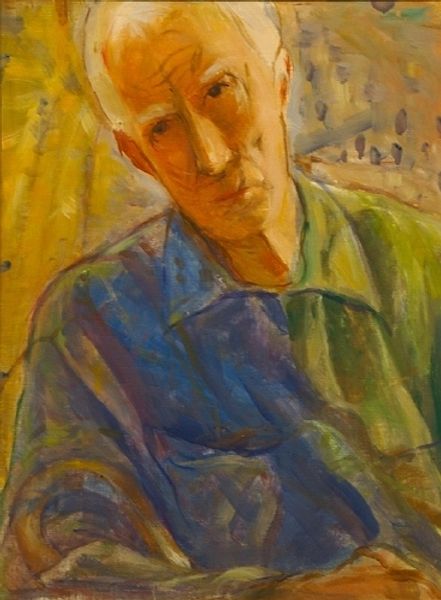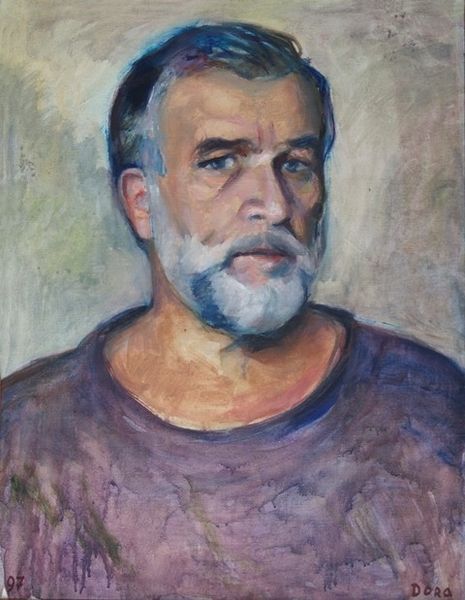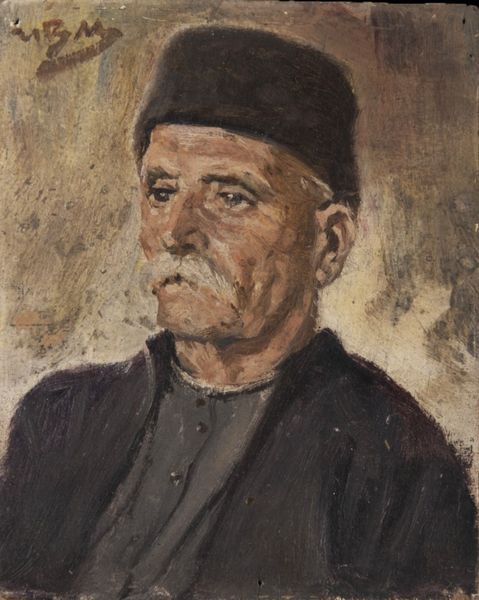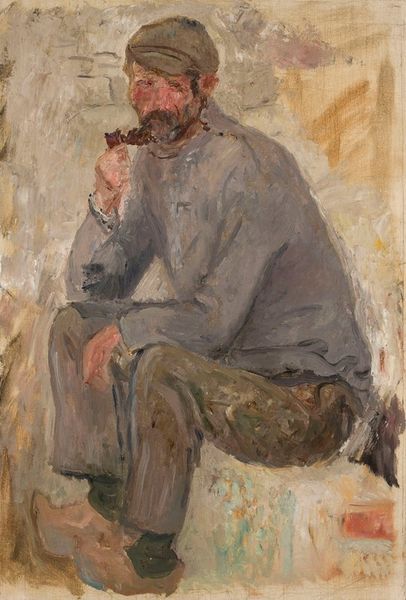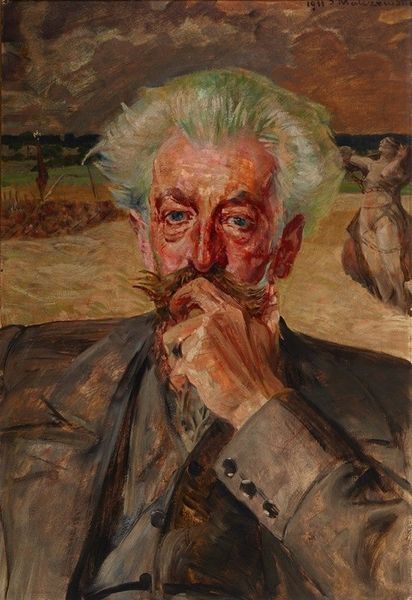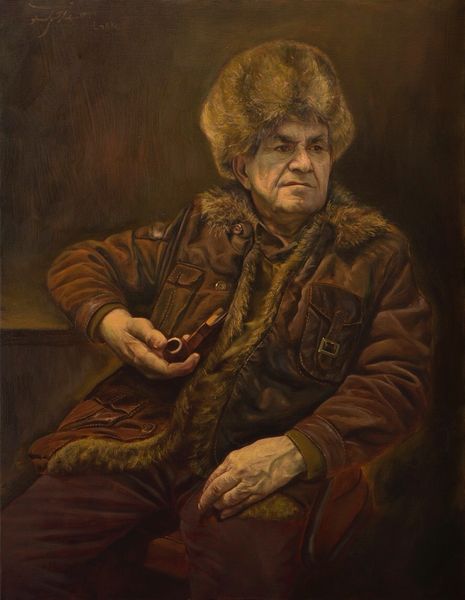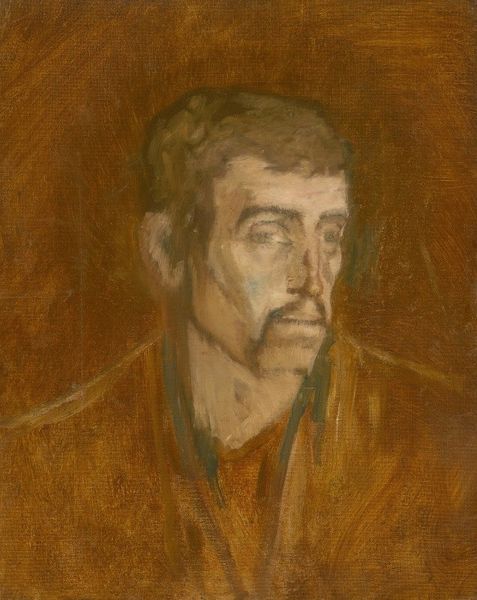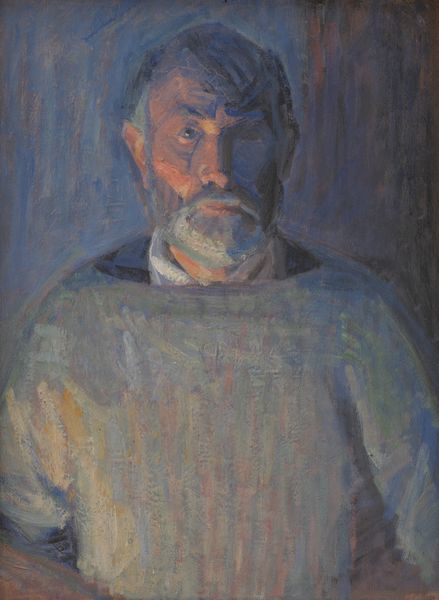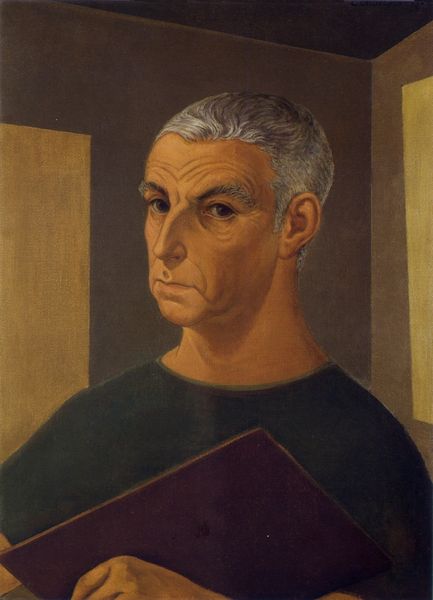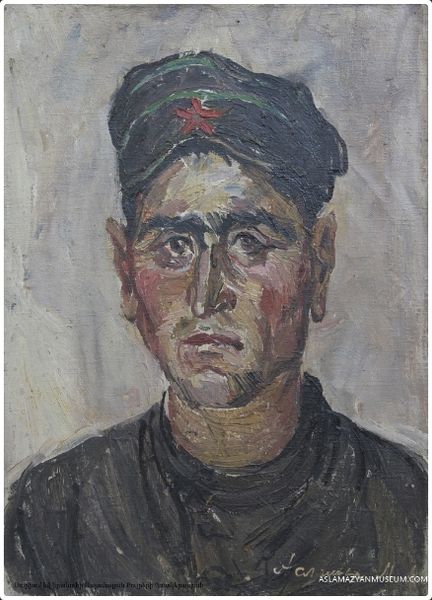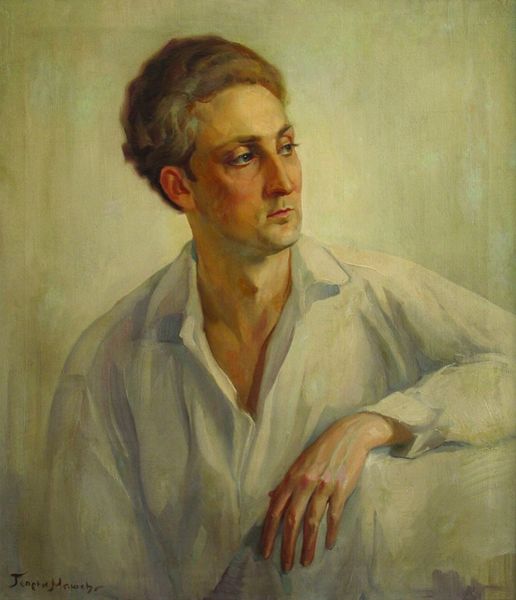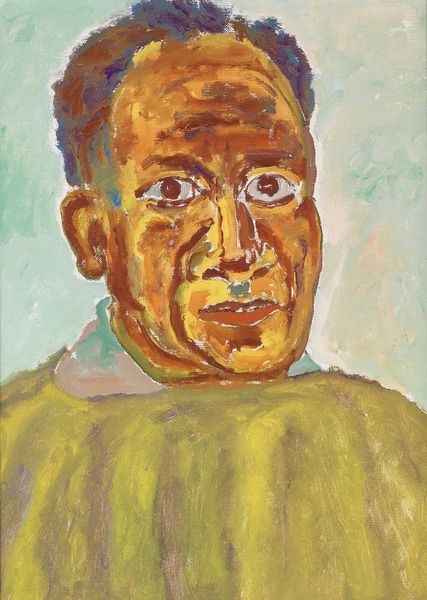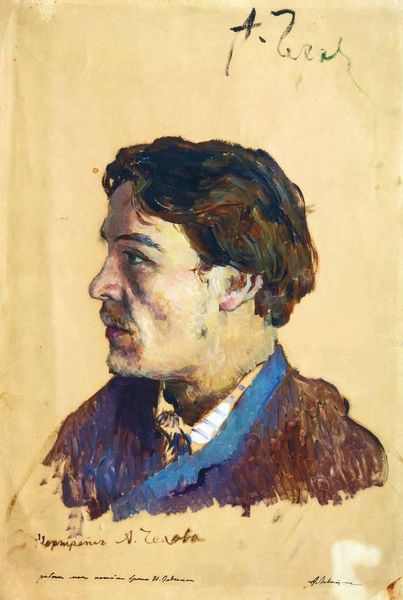
Copyright: Abdul Mati Klarwein,Fair Use
Curator: Upon viewing, what’s your immediate take on this painting of Robert Graves? Editor: Well, it feels very grounded. The earth tones and the way the brushstrokes are visible give it a tactile, almost rough quality. I’m interested in the visible labor in its making. Curator: That's interesting. Looking at the broader context, Abdul Mati Klarwein painted this oil portrait in 1958, placing Graves, a poet known for his work on mythology and the White Goddess, within a rich symbolic framework. The poet seems in deep contemplation. Editor: I agree, but it’s also straightforward. No attempt to hide the materiality – you can see how the paint is layered, especially in the hair and clothing. Were specific pigments employed for certain purposes? That layering could denote not just physical depth but different temporalities of creation and viewing. Curator: Indeed, and color is also quite potent here. Beyond the material qualities, Graves’ almost luminous face draws the eye upward. The sky-blue eyes and shock of white hair contrast with the somewhat muted tones of his clothing, creating a powerful visual symbol of inner light or intellectual brilliance. What myths or narratives might the specific use of color invoke? Editor: Color, in that era of painting, had such different socio-cultural weight. Did Klarwein select shades deliberately associated with Graves's poems or cultural leanings? Moreover, how readily available were such materials? We must also consider that art supplies mirror historical patterns of extraction, distribution, and access. Curator: Very astute. And to further this contextual discussion, one cannot view this image outside the larger framework of modernism's experimentation with portraiture, attempting to represent psychological depth through unique composition and color. I consider this portrait, too, as a reflection of a romantic pursuit of individual truth. Editor: Ultimately, whether high romantic or a pragmatic depiction due to available tools and cultural climate, it stands as evidence of material engagement, human interaction, and cultural transmission. It forces one to ask what physical legacy we’re creating in our current age of digital images and whether it has any tangible relationship to reality at all. Curator: Yes, this portrait makes us reflect on that precise intersection between external depiction and internal experience, doesn’t it? Editor: Precisely. Its grounded qualities truly leave an impact.
Comments
No comments
Be the first to comment and join the conversation on the ultimate creative platform.
